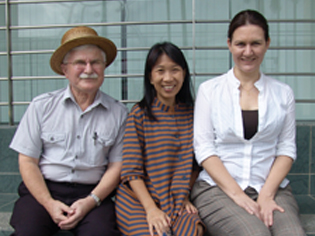Why Singapore’s English Teachers Should Embrace Singlish, Not Fight It
Is it time for Singaporean educators to embrace Singlish as a legitimate learning tool? What the Research […]
Read More
Many studies have shown that there is a strong relationship between students’ self-belief and their academic performance. How can this understanding help us in the Math classroom?
An NIE study conducted by Professor Lazar Stankov, Dr Suzanne Morony and Dr Lee Yim Ping investigates self-beliefs and metacognition in mathematics students. They found that students who think they are good in math tend to perform well in math tests. What sets these students apart?
Lazar and his team suggest that students’ beliefs in their own ability are of particular importance to their math performance. He identifies four kinds of self-belief:
“There is plenty of evidence indicating that the first three of these self-beliefs are among the best predictors of how well a child does in school,” says Lazar. “Few studies, however, investigate the role of confidence.”
Findings from the study show that our students are conscious of what they are capable of and can determine quite accurately what they know and what they do not know – perhaps better than students in many other countries.
Collecting data from more than 600 Secondary 3 students in 5 schools, this is the first project in Singapore that focuses on measuring self-confidence.
 “From this study, we know that confidence is a much better predictor of students’ achievements than any other non-cognitive measure,” notes Lazar. “In fact, it acts in a way that it overcomes everything else; so confidence is very important.”
“From this study, we know that confidence is a much better predictor of students’ achievements than any other non-cognitive measure,” notes Lazar. “In fact, it acts in a way that it overcomes everything else; so confidence is very important.”
“We measure students’ self-confidence by asking them to do a math test. After each item in the test, we ask how confident they are that their answers are correct,” he explains.
Using this method, Lazar and his team calculate the students’ confidence rating. It is then compared to their percentage of correct answers. The difference between students’ confidence rating and percentage of accurate answers yields a bias score, which indicates how aware students are with regard to their math abilities.
Lazar believes these confidence tests would benefit both learning and teaching. “If students strongly endorse an incorrect answer to a question, then this indicates that something has gone wrong either in the learning or teaching process.” This has important implications in the area of assessment for learning.
– Lazar Stankov, Centre for Research in Pedagogy and Practice
The scores from the self-confidence tests provide students with insights into the topics they are weak in. Students who think they have given a correct answer to a question but are proven otherwise may gain the necessary knowledge of the kind of math topics they are weak in.
This could encourage self-reflection in students and motivate them to pay more attention to these weaker topics. “It teaches students to really think about what type of math questions they struggle with and which questions they thought were easy,” says Suzanne.
For teachers, this information could guide them in effectively modifying instructions to cater to students’ learning needs. “This could suggest to the teachers to explore alternative approaches to help the student access that particular knowledge, and to the students to devote more study time to this topic,” observes Lazar.
“When we went to share the findings with the schools, teachers were very interested to know their students’ bias scores. They wanted to know how correct their students’ answers were and how confident the students were about their responses being correct,” says Yim Ping.
Some of the findings enabled to the teachers to sharpen their selection of specific strategies to increase their students’ confidence. “They realized they could leverage on certain topics to explore enhancing students’ self-confidence and interest,” she adds.
By understanding the link between confidence and students’ academic performance, we can better build on the firm foundation we have in math learning, to make our competent learners also confident learners.